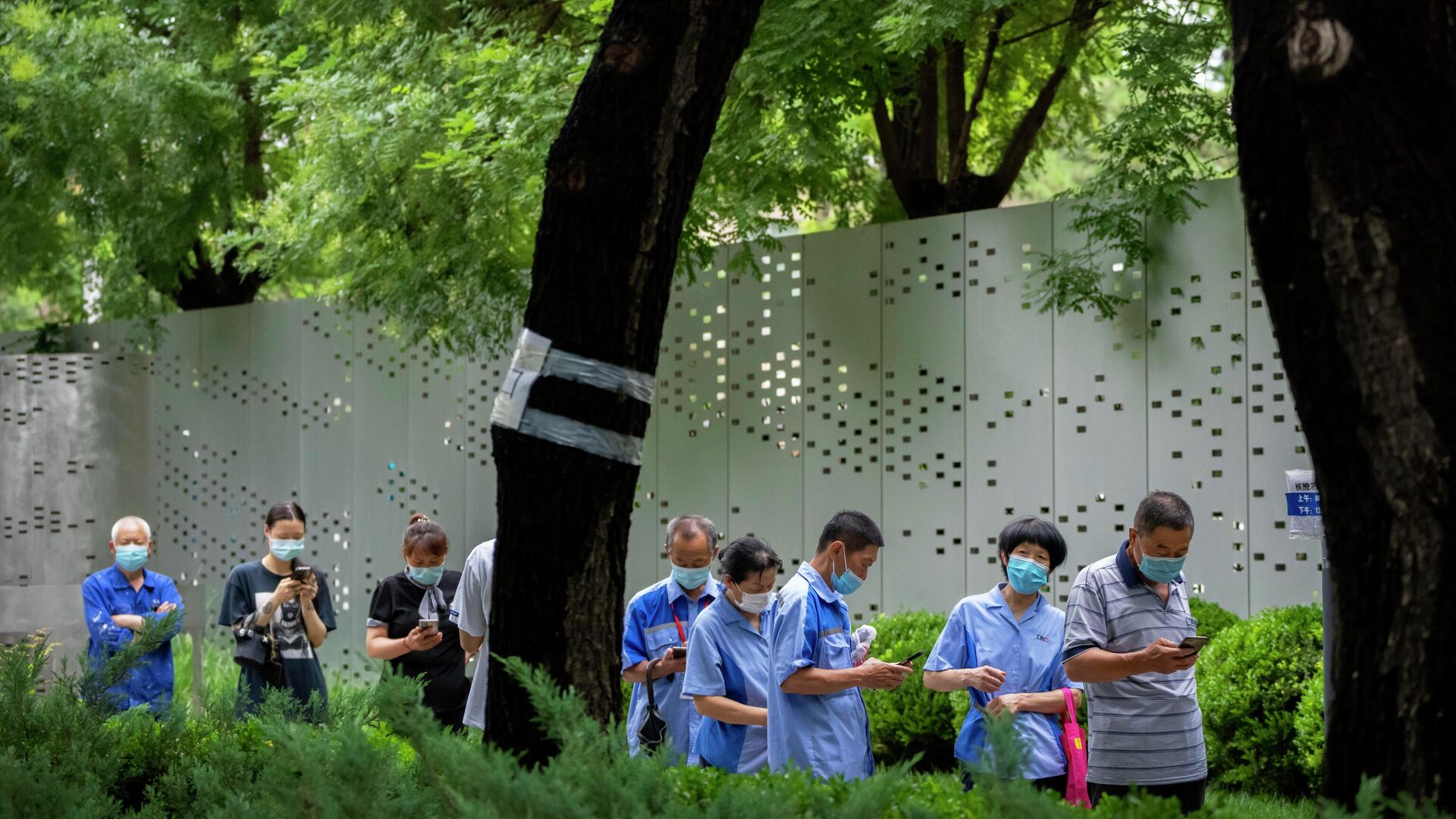China Introduces Vaccine Mandates for Most Public Venues for First Time
18:02 GMT 06.07.2022 (Updated: 18:03 GMT 06.07.2022)

© AP Photo / Mark Schiefelbein
Subscribe
Chinese health authorities were actively deterred from requiring vaccinations earlier in the COVID-19 pandemic but nonetheless succeeded at vaccinating nearly the entire population of 1.4 billion people.
Beginning next week, people wanting to enter certain public facilities in China will need to show proof of COVID-19 vaccination or of having a medical reason for not getting the shot, Li Ang, deputy director of the Beijing Municipal Health Commission, told reporters on Wednesday.
The list includes museums, theaters, stadiums, gyms, and other entertainment venues; in addition, elderly people will also have to show proof of vaccination to enter community facilities such as game rooms. Restaurants and public transportation are exempt from the new requirement.
The new mandate is in addition to a standing requirement for residents of the Chinese capital city to get tested every three days and to need a negative test to enter public venues.
A year ago, when the Delta variant of COVID-19 caused the worst outbreak in China since the one that started the pandemic, and Beijing responded by ushering in the “Zero Covid” policy, the National Health Commission urged provincial authorities to keep the vaccination program “informed, consented and voluntary” and not to introduce mandates for public access, as many Western states had done.
However, that was before China succeeded at vaccinating 87% of its 1.4 billion-strong population, including 97% of Chinese adults, and before the Omicron variant caused the worst and most persistent outbreaks for China until now in the pandemic.
The change also comes as the NHC relaxes travel quarantine requirements for the first time since the start of the pandemic in early 2020, but also as Beijing health authorities indicated they were planning for “Zero Covid” to last another five years.
The NHC reported 427 new cases on the Chinese mainland on Wednesday, most of them concentrated in the eastern provinces of Anhui and Jiangsu, and no new deaths. The news brings the total detected cases on the mainland since the start of the pandemic to 226,176, while total deaths remained at 5,226. The situation has been less rosy in Hong Kong, a special administrative region with greater autonomy, and in Taiwan, where an autonomous government with foreign backing rules in defiance of Chinese claims of sovereignty.
Paradoxically, Chinese elders have a lower vaccination rate than younger generations. Last month, the Financial Times reported that Chinese cities had begun offering “vaccine insurance” to people over the age of 60, pledging to cover their medical costs related to any potential complications caused by vaccination. Some two-thirds of Chinese citizens over 60 are under-vaccinated, with 95 million not having gotten their booster shot as of June 5.
Ma Chaofeng, a health official in Shaanxi’s capital of Xi'an, told reporters on Tuesday that more than two dozen cases had been detected in the city and were identified as the BA 5.2 subvariant of Omicron. The city introduced new mass nucleic testing on Wednesday in an attempt to stay ahead of a larger outbreak, with most commercial and medical institutions remaining open as normal. Nonetheless, in the West, where essentially all pandemic mitigation measures have been discarded, the move was described as “Xi’an shuts back down.”
“The transmission chain is clear, the source is clear,” Pang Xinghuo, deputy director of the Beijing Centre for Disease Prevention and Control, told reporters on Wednesday about the imported cluster in Xi’an. “The outbreak is considered to be controllable overall, based on the existing epidemic development trend.”
